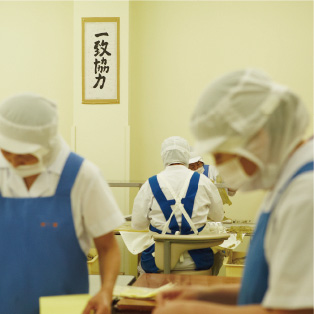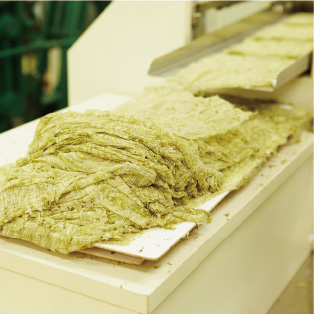
Ichiban Co.,Ltd.
988-0001
1-15-1 Hamacho, Kesennuma City, Miyagi Prefecture CEO: Kazunobu Onodera
TEL:+81-(0)226-4114
FAX:+81-(0)226-24-1565
e-mail:ichiban@mx51.et.tiki.ne.jp
Processed seaweed products of Sanriku using “bounty from the sea” and “experience and skills”
Ichiban places priority on producing food items that are healthy, such as tororo-kombu(paper-thin kelp shavings) and furikake(seasoning mix for rice) that mainly use seaweed cultivated along the Sanriku coast. The company delivers the taste and flavor of nature along with seaweed products rich in nutrition.
Taste and materials
Kelp seaweed is obtained from several different areas and blended together to produce an ideal balance of quality, cultivation area and harvest time.The company’s experience and skills gained over the years are the key to producing tasty food items.
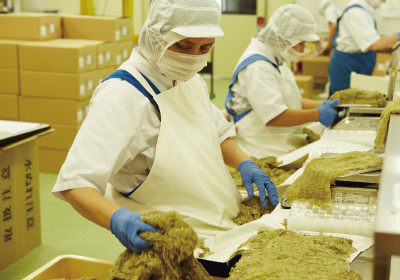
Equipment
Materials including Sanriku kelp are kept in a storage area that has strict temperature control and is managed in a hygienic environment.
The company routinely has a stock of 50 tons seaweed.
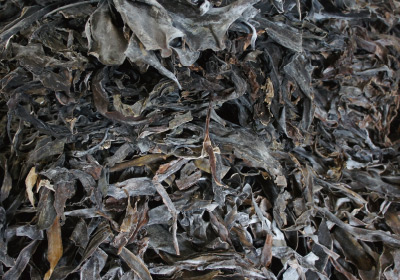
craftsmanship
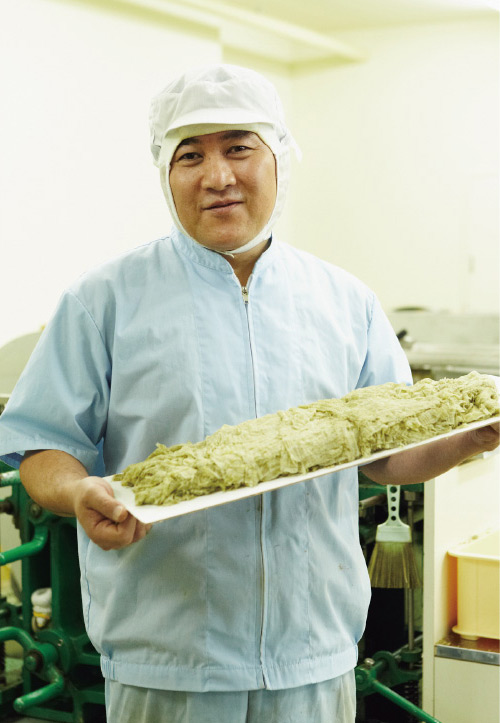
The ingredients are “bounty of the sea” and “experience.”
Ichiban Co., Ltd. Factory Manager: Toshinori Hatakeyama
“The job of discerning kombu and bringing out its deliciousness.”
“I’ve always wondered what process transforms kombu into the beautiful, light green, fluffy texture. With that question in mind, I visited Ichiban Co., Ltd., a company that produces seaweed products such as tororo kombu, furikake, and tsukudani in Kesennuma. I was welcomed by Toshinori Hatakeyama, the factory manager.
The company’s headquarters and factory, a two-story building located near the sea, greeted me. Upon being guided to the second floor, I found myself in a well-maintained raw material storage room, with large bundles of dried kombu piled up. It was astonishing to learn that around 500 tons of kombu are stored here at all times, sourced through bidding.
The primary season for purchasing kombu is autumn. ‘The key is how much good-quality kombu we can procure from September to November,’ Mr. Hatakeyama explained.
Upon closer inspection of the kombu in the storage room, I noticed that each pile was labeled with different origins, such as Aomori, Iwate, and Miyagi. ‘Blending kombu from various regions is one of the keys to creating deliciousness,’ Mr. Hatakeyama explained. However, there is no specific recipe for this blending process. Mr. Hatakeyama personally judges based on factors such as the harvest location, time, and condition of the kombu. He emphasized that not only the taste but also the thickness of the texture varies depending on the selection of kombu.
With over 20 years of experience since joining the company, Mr. Hatakeyama’s keen eye, developed from facing kombu directly, truly embodies craftsmanship.”
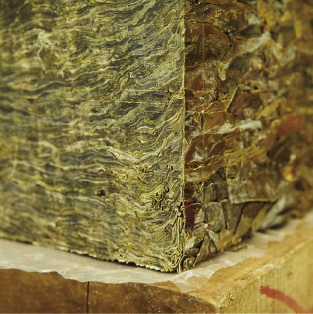

“The deliciousness accumulates, just like layers of kombu mille-feuille.”
“Guided downstairs into the factory, as soon as I stepped inside, I was enveloped in the delightful aroma of tororo kombu. It was a tantalizing scent that whetted the appetite. One of the staff members accompanying me remarked, ‘Just this smell alone makes me hungry.’
The initial process in the spacious workshop involves soaking kombu sourced from various regions selected by Mr. Hatakeyama in seasoning liquid to soften it. Then, the kombu is cleaned using a sand remover machine and compressed twice in a press to form blocks. Approximately 65 kg of kombu, equivalent to the weight of an adult male, is tightly compressed. Using an electric cutter, the edges are trimmed, shaping the block into a compact, heavy mass roughly the size of a small suitcase for travel. The cross-section of this block, with hundreds of layers tightly packed without gaps, resembles a ‘kombu mille-feuille.’
Next, this solid mass is placed into a slicer to transform it into tororo kombu. The beautiful cross-section is securely fixed facing upward, and a wide sharp blade moves slowly back and forth. Mr. Hatakeyama explained, ‘It’s more like scratching than cutting,’ likening the process to shaving wood with a plane. In just a few seconds, thin layers of tororo kombu gently stack up. Meanwhile, Mr. Hatakeyama’s gaze remains fixed on the blade. Suddenly, he stops the machine. ‘The slicer blade needs to be replaced frequently. If neglected, we can’t produce good products.’ He emphasized the importance of changing and sharpening the blade multiple times until a block is completely used up.
The process of making tororo kombu turned out to be more delicate and intricate than I had imagined. I was truly impressed by the skill of the craftsmen. Yet, Mr. Hatakeyama remains humble, saying, ‘Every day is a discovery, a learning experience. Despite having over 20 years of experience, I still have much to learn.’ He also expressed his desire to work together with everyone to expand the company.
In each strand of Ichiban’s tororo kombu, Mr. Hatakeyama’s skills, thoughts, and life are embedded. Every time I see tororo kombu now, I am reminded of Kesennuma. Gratitude to the bounty of the sea and the skill. Today, once again, I will enjoy it deliciously.”
